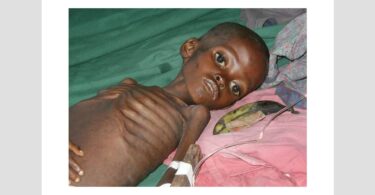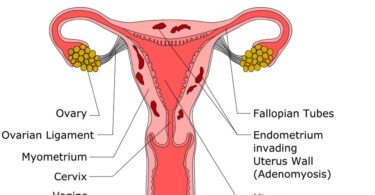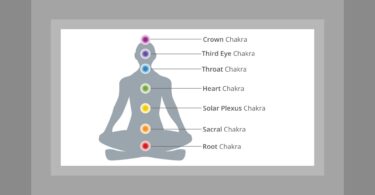INDEX
| No. | Name of Topic |
| 1 | Introduction of Anxiety Neurosis |
| 2 | Case Details |
| 3 | Physical Generals |
| 4 | Past History |
| 5 | Physical Examination |
| 6 | Systematic Examination |
| 7 | Investigation |
| 8 | Diagnosis |
| 9 | Differential Diagnosis |
| 10 | Analysis Of Case |
| 11 | Rubric Selection |
| 12 | Repererisation |
| 13 | Explanation |
| 14 | Remedy |
| 15 | Potency Selection |
| 16 | Follow Up |
| 17 | Bibliography |
- Introduction
- Anxiety neurosis is a mental condition characterized by feelings of anxiety and fear, where anxiety is worry about the future and fear about current situations. These feeling may cause physical symptoms like palpitation and shaking.
There are many anxiety disorders
- Generalized anxiety disordered
- Specific phobia
- Social anxiety disordered
- Separation anxiety
- Agoraphobia
- Panic disordered
- Case details
A 24 year old man was suffering from anxiety neurosis. He had taken allopathic treatment without much improvement.
Chief complaints –Non specific chest pain since four months which started after his mother’s bypass heart surgery.
Case History :
- He said that his complaint started after his mother’s bypass surgery.He had seen allthe treatment given to her.
- Before bypass surgery his mother was on ventilation and riles tube.At that time he experiencedgreat fearand anxietyabout what will happen now. If his mother dies then who will take care of his family. Fear that his family will collapse.
- While asking about critical situations in his life he narrated that after bypass surgery of his mother when the doctor called him , he suddenly got frightened (Dharsko). He felt anxiety in his chest. His heart started beating fast (palpitation). He felt that if his mother die than what will happen. He experiencedArerati(shock), goose flesh and trembling.
- When doctor said your mother is all right and she is fine then he felt good and relaxed.
- After one week he felt that he also had a heart attack (Homeopathy for Heart Attack) and simultaneously all complaints started.
- He had done all tests including ECG which were all absolutely normal.
- He thought that if he got heart attack then he will also be operated on what will happen.
- When his anxiety reached a peak, he experienced palpitation, perspiration, suffocation and chest pain.
- Dream – he had a dream in which his father died because of an accident and suddenly he woke up from sleep with a frightened feeling.
- At night usually he has fear of heart attack.
- He is a very sensitive person and little things make him anxious.
- Physical generals
Thirstless
Perspiration –”when frightened I perspire very much”
Appetite lost since four months
Weight lost since four months
- Past history
No major past illness
- Physical examination
Weight – 45kg
Blood pressure – 122/ 78 mmhg
Respiratory rate – 17/minute
Pulse – 72/minute
- Systematic examination
CNS – NAD
CVS – NAD
RS – NAD
- Investigation
ECG & echo – Normal
- Diagnosis:Anxiety Neurosis
- Differential diagnosis
OCD
Bipolar Disorder
- ANALYSIS OF CASE
- Reportorial analysis
- Rubrics

- Reperterisation

- Explanation
- Here the exciting cause is very prominent.
- Soanchor of the case is,all complaints starts after bypass surgery of mother.
- Mentally patient having great anxiety/fear about heart disease which he experiences physically as DHRASKO, trembling, gooseflesh and trembling.
- Appetite, sleep and weight loss all physical generals are ALTERED after surgery of mother.
- We can see very clearly expression of anxiety/fear on physical plan– PSYCHOSOMATISATION.
- Basic nature of patient is fearful, anxious and sensitive.
- Situation affects the patient indicating sensitivity and reactivity. PLANT KINGDOM
- Reaction of patient in the situation is very sudden and panic indicates – ACUTE reaction/ PANIC
- REMEDY – ACONITE NAP. 1M
- Potency selection
- Indication of high Potency –
Because of exciting cause, intensity of anxiety, characteristic mental
Symptoms and panic state of patient indicate higher potency.
Mechanism of action – Aconite Nap.1
- Aconite can interact with the voltage – dependent sodium-ion channel which are proteins in the cell membrane of excitable tissue such as cardiac and skeletal muscles and neurons.
- These proteins are highly selective for sodium ions. They open very fast to depolarize the cell membrane potential causing the upstroke of an action potential.
- Normally sodium channel closes very rapidly but depolarization of membrane potential causes opening of potassium channel and potassium efflux, which results in repolarization of membrane.
- Aconite binds to the receptor at the neurotoxin binding site 2 alfa subunit of channel protein. This binding results in a sodium ion channel that stays open for longer.
- Aconite suppresses conformation change of sodium ion channel from the activated state into inactivated state. The membrane stays depolarized due to constant sodium influx. As a result membrane cannot repolarize.
- The binding of Aconitine to the channel also leads to the channel change from the inactive state to active at a more negative voltage.
- In neurons Aconitine increase the permeability of the membrane for sodium-ions. Resulting in huge sodium – influx in the axonal terminal.
- As a result, the membrane depolarizes rapidly.
- Due to strong depolarization, the permeability of membrane for potassium-ions increases fast, resulting in a potassium-reflux to release the positive charge out of the cell. Not only the permeability for potassium ions but also the permeability for calcium ions increases as a result of depolarization of membrane.
- The calcium influx takes place. The increased calcium concentration in the cell stimulates the release of the neurotransmitter acetyl choline into synaptic cleft. Acetyl choline binds to ACReceptor at post synaptic membrane to open the sodium channel there, generating a new action potential and cause muscle tension.
- At higher concentrations,Aconitine decreases the electrically evoked acetyl choline release, resulting in decrease muscle tension.
- At high concentration the sodium ion channel is constantly activated, transmission of action potential suppressed, leading to non-excitable organ or paralysis.
- Follow up
| Date | Symptoms | Prescription |
| 13/10/2015 | Full case taken | ACONITE NAP. 1M Placebo(TDS) for 2 days |
| 15/10/2015
After two days |
50% improved in thoughts
Appetite is good Mood is good Feeling fresh
|
Placebo(TDS) for 7 days |
| 13/10/2015 | No anxiety
Numbness in right leg Vertigo
|
Aconite 1M
Placebo (TDS) for 7 days |
| 26/10/2015 | Improved in all complaint | Placebo (TDS) for 30 days
|
| 26/11/2015 | No complaint at all | Placebo (TDS) for 30 days |
| 01/01/2016 | Placebo (TDS) for 30 days
|
|
| 02/02/2017 | Improved | Placebo(TDS) for 3 months
|
| 05/05/2017 | Improved
|
Placebo(TDS) for 3 months
|
| 23/06/2018 | No complaint at all | NO MEDICINE |
Mechanism of action of Aconite in this case:
- Our patient is suffering from anxiety neurosis
- Aconite can interact with the voltage – dependent sodium-ion channels which are protein in the cell membrane of excitable tissue such as cardiac and skeletal muscles and neurons.
- When patient feels anxious and fears that he will get a heart attack, voltage channels are open which excite cardiac muscle, skeletal muscles and thermoregulatory systems.
- Therefore he feels palpitation, perspiration, suffocation, chest pain and trembling.
Reference: 1. https://en.m.wikipedia.org/wiki/Aconitine
- Bibliography
Harrison’s 15th edition Principalsof Internal Medicine (Page 1456)
Material Medica Of Homoeopathic Medicine by Dr S.R.Phatak (2nd edition) (Page 359)
Complete Repertory by Roger van Zandvoort (First edition)
Homoeopathic posology by Dr AjitKulkarni
Physical diagnosis by RustumJalVakil and Aspi f. Golvala (12th edition, page 329)
Homoeopathic medical repertory by Dr Robin Murphy (3RD edition)






